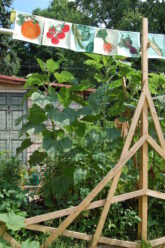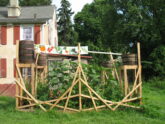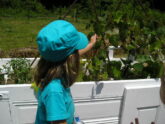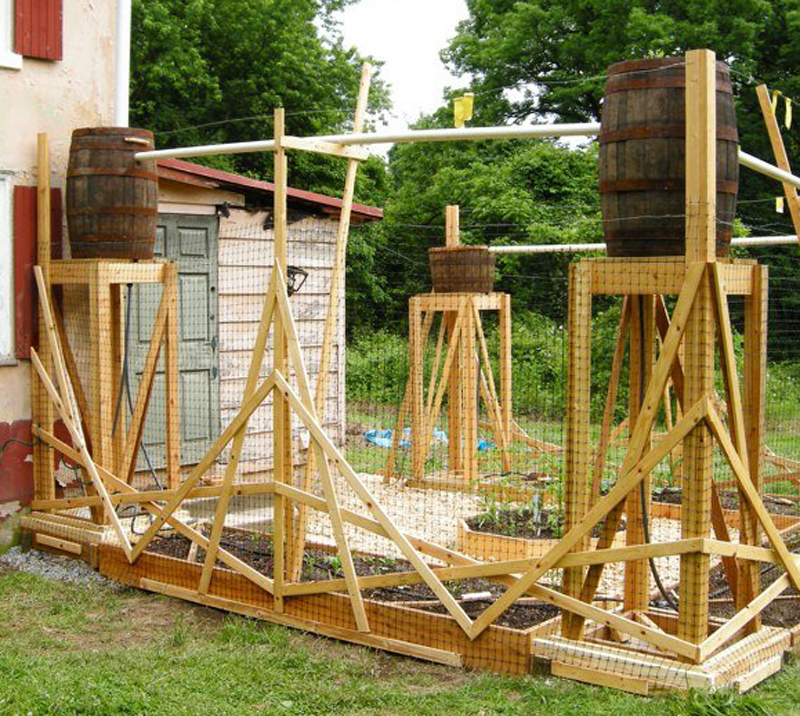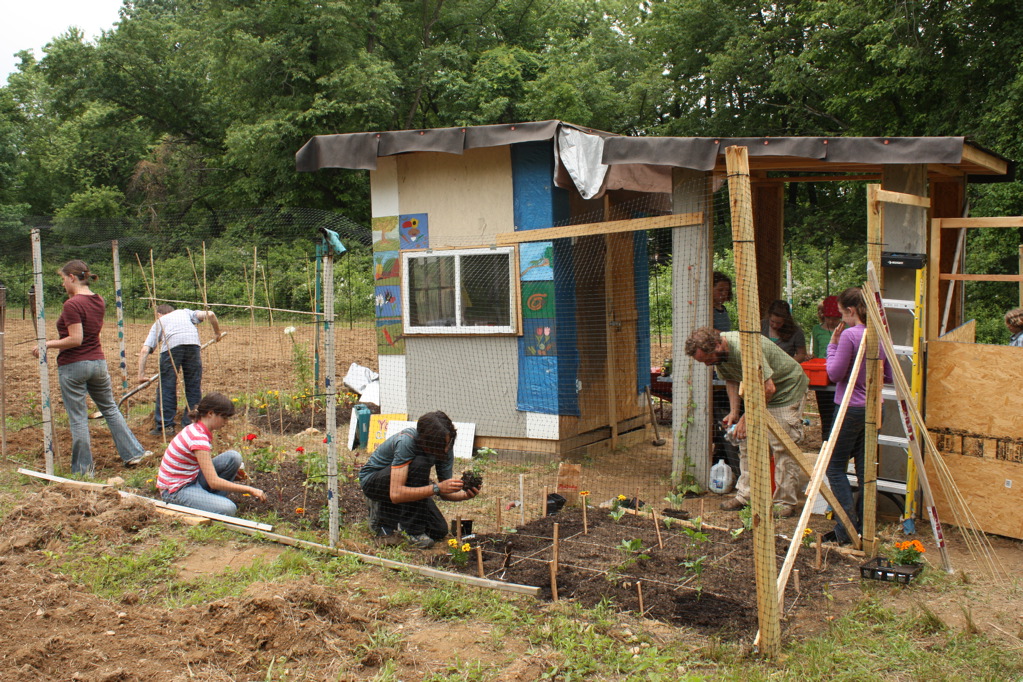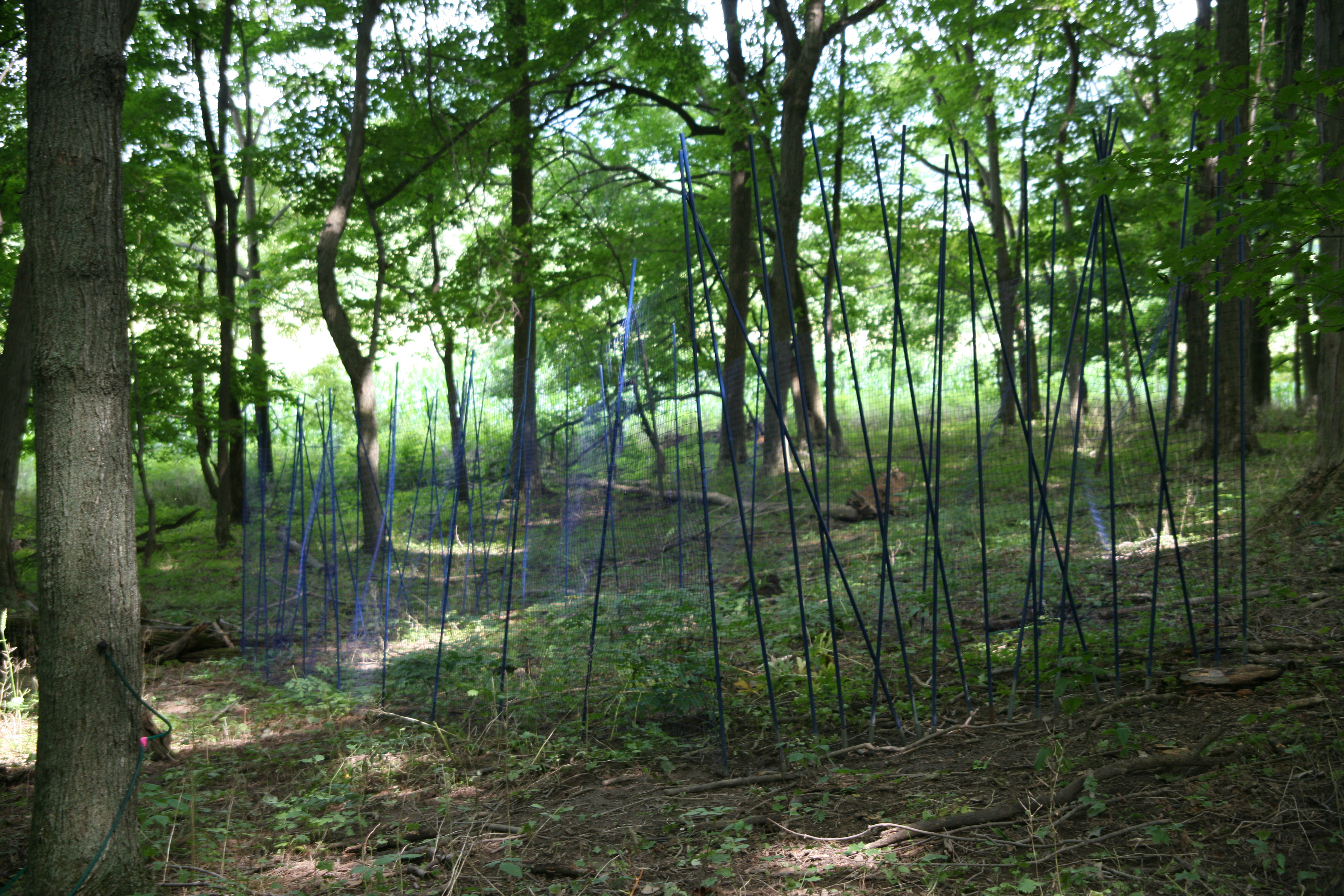Down to Earth: Artists Create Edible Landscapes
Guest Curator, Amy Lipton of ecoartspace
Opening Reception
Saturday September 12, 2009, 2pm – 6pm
On view through November 23, 2009
Exhibition located at The Schuylkill Center’s Second Site, at the corner of Port Royal Ave and Hagy’s Mill Rd.
Down to Earth: Artists Create Edible Landscapes was an exhibition that highlighted the growing focus and emergence of “green” principles and sustainability in relationship to food, art, design and agriculture. The exhibition included six artists or artist teams who were all working to create socially engaging interventions in the landscape related to food and agriculture, creating an aesthetic and cultural link between art and farming.
Several food writers including Michael Pollan, author of The Omnivore’s Dilemma and Barbara Kingsolver, author of Animal, Vegetable, Miracle have helped to propel a new generation of interest in issues related to organic growing, heirloom seeds, buying food locally, farmers markets and backyard kitchen gardens. Michele Obama’s White House vegetable garden has helped to bring these issues to the forefront of mainstream culture. Films such as Fast Food Nation, and Food Inc, have focused on the negative results of monocultural farming used in industrial agriculture, factory farming methods and inhumane processing of livestock.
With economic downturn, as well as rising fuel and food prices, a new focus on sustainability is emerging, and artists are engaging these important issues in their work. Works by artists are currently being exhibited internationally that address how food is grown, transported and consumed.
The Schuylkill Center for Environmental Education presents a unique opportunity for artists to engage with the landscape, with its preserved open space and agricultural history. The site of the exhibition, Brolo Farm, is a small section of the overall 300 plus acres at SCEE and was at one time a working farm, though long ago abandoned. Each of the artists has created a large-scale work outdoors in this 3-acre site.
– Amy Lipton
The artists in Down to Earth: Artists Create Edible Landscapes:
Joan Bankemper (New York, NY) is creating a contemporary “earthwork” which will function as a medicinal herb garden. Titled Willa after the Paleolithic fertility figure Venus of Willendorf, the garden is based on this archaic form. Inside the figure are 7 circles representing Hindu chakras or energy centers from root to crown; each chakra is planted with herbs that respectively lead to healing for that area of the body.
Knox Cummin, (Philadelphia, PA) has constructed Not Drain Away, a rain water collection sculpture off of the roof of the existing farmhouse complete with rain barrels, piping and irrigation system. The water collection system is gravity powered and uses no external energy to operate; by collecting rainwater, there is no additional load on the municipal water supply.
Steffi Domike and Ann Rosenthal (Pittsburgh, PA) created a vegetable garden which benefits from the rainwater being collected in Cummin’s work. Titled An American Roots Garden, it includes foods common to early America, including Native American crops and those brought by settlers and immigrants. These include corn, squash, and beans (the “three sisters,”) a variety of potatoes and tomatoes, beets, carrots, sunflowers, marigolds, and herbs. The garden is laid out in a quilt-type pattern that provides a structure to consider the evolution and story of five staple crops and how food cultures are lost or preserved.
Simon Draper and the Habitat for Artists Collective, with Todd Sargood and Odin Cathcart, (Hudson Valley, NY) Jeff Bailey ( Phila, PA) and Cathy Liebowitz (New York, NY) have installed a work titled Drawn to / Drawn from the Garden consisting of a mini art studio, potting shed, and seven vegetable/flower gardens. The project references the history of landscape painting and artists’ long attraction to the art of gardening. It also aims to encourage backyard food growing and the re-purposing of abandoned sites for gardening. Local artists and school groups have been invited to collaborate and to adopt two of the garden plots, provided opportunities for engagement and education.
Stacy Levy (Spring Mills, PA) will create a work titled Kept Out, consisting of an enclosure of blue metal fencing that will exclude deer from a small piece of the woods as a way to investigate how the deer alter their own edible landscape. The deer’s meal choices affect the growth of the forest and the field: their grazing results in fewer seedlings of native tree, shrub and herbaceous species. Due to human influence, deer populations are out of balance and destroying the sustainability of their own food sources in the field and forests.
Susan Leibovitz Steinman’s (Oakland, CA) 40’ square installation has at its heart a five-sided permaculture urban forest orchard, contained within a raised bed structure built using locally culled household salvage. The permaculture planting method mimics nature’s principle of combining diverse compatible plantings that conserve labor, water and soil, to produce abundant healthy food. The title Urban Defense and the form of the installation refer to Philadelphia’s myriad columned public buildings, and to the political strength of the U.S. Defense Department’s Pentagon. Ecologically, Urban Defense honors another American symbol, the apple—its five seed chambers of diverse seeds can create an entire sustainable food forest. Urban Defense includes more than a dozen varieties of trees, perennial bushes and annuals whose fruits will be shared in a public harvest this fall.

